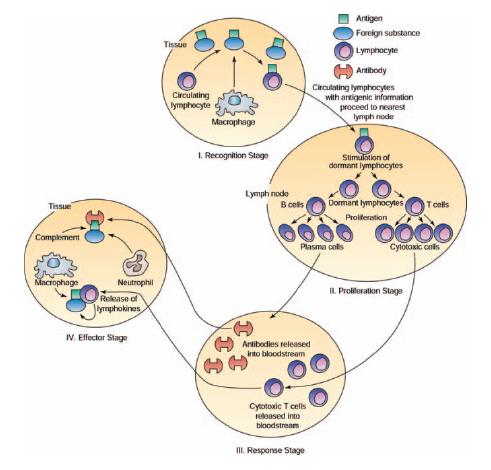There are five classes of antibodies, known as immunoglobulins (Igs).
| Class |
Description |
| IgG |
Accounts for 80% of all antibodies in the blood; found in blood, lymph, and the intestines; the only antibody that crosses the placenta from mother to fetus; provides resistance against many viruses, bacteria, and bacterial toxins |
| IgA |
Accounts for 10% to 15% of all antibodies in the blood; found mostly in secretions such as sweat, tears, saliva, and mucus; attack pathogens before they enter internal tissues; levels reduce under stress lowering resistance |
| IgM |
Accounts for 5% to 10% of all antibodies in the blood; found in blood and lymph; first antibody secreted after exposure to an antigen; includes the anti-A and anti-B antibodies of ABO blood, which bind to A and B antigens during incompatible blood transfusions |
| IgD |
Accounts for 0.2% of all antibodies in the blood; found in blood, lymph, and the surfaces of B cells; plays a role in the activation of B cells |
| IgE |
Accounts for less than 0.1% of all antibodies in the blood; found on the surfaces of mast cells and basophils; stimulates cells to release histamine and other chemicals that accelerate inflammation; plays a role in allergic reactions |

Antibodies, antigens, and lymphocytes work together to fend off disease. (From Smeltzer, S. C., and Bare, B. G. Textbook of Medical-Surgical Nursing. 9th Ed. Philadelphia: Lippincott, Williams & Wilkins, 2000.)

